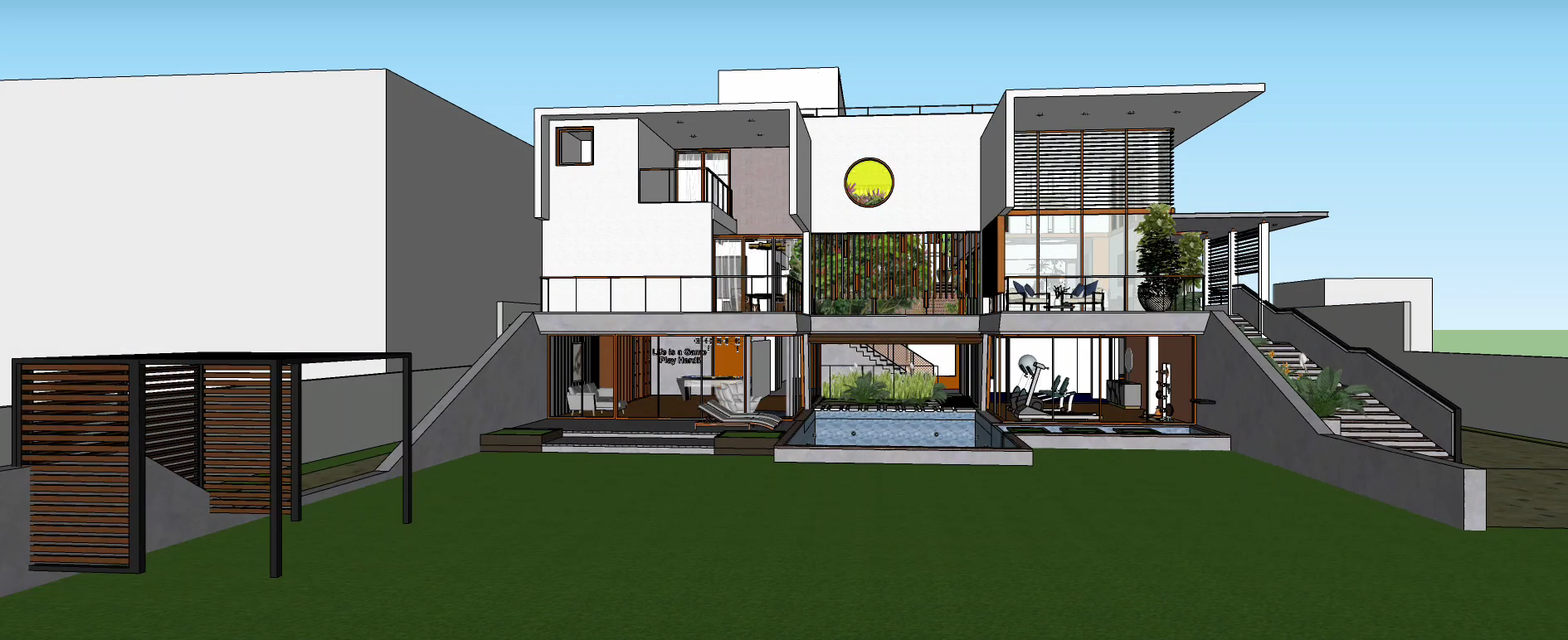The Essence of Modern Residential Design: A Comprehensive Guide
Residential design has evolved significantly, integrating functionality, aesthetics, and sustainability into every aspect of home creation. Modern residential design is not merely about constructing houses; it's about crafting spaces that reflect personal style, accommodate contemporary lifestyles, and promote well-being. This guide delves into the core elements of residential design, emphasizing its importance in creating functional and visually appealing homes.
1. Understanding Modern Residential Design
Modern residential design emphasizes clean lines, open spaces, and an integration with the surrounding environment. It focuses on creating homes that are not only visually striking but also highly functional. This approach often includes large windows to maximize natural light, minimalist aesthetics to reduce clutter, and the use of natural materials to enhance environmental harmony.
2. Functional Layouts
A crucial aspect of residential design is creating functional layouts that cater to the needs of the inhabitants. Open floor plans are popular in modern design, as they facilitate better flow and interaction within the home. Key areas such as the kitchen, living room, and dining areas are often seamlessly connected, promoting a sense of spaciousness and facilitating social interaction.
3. Sustainable Design Practices
Sustainability is at the forefront of modern residential design. Incorporating energy-efficient appliances, sustainable building materials, and green technologies is essential for reducing the environmental footprint of a home. Solar panels, energy-efficient lighting, and water-saving fixtures are just a few examples of how sustainable practices can be integrated into residential design.
4. Personalization and Style
While modern design principles provide a framework, personalization is key to creating a space that truly feels like home. Residential design allows homeowners to express their personal style through choices in color palettes, furniture, and decor. Whether it's a sleek, contemporary look or a cozy, traditional ambiance, the design should reflect the individual's taste and preferences.
5. Incorporating Technology
The integration of smart home technology is becoming increasingly common in residential design. Home automation systems can control lighting, security, climate, and entertainment systems, enhancing convenience and security. Modern residential design often includes provisions for these technologies, ensuring that homes are equipped to meet the demands of a tech-savvy lifestyle.
6. Outdoor Living Spaces
Incorporating outdoor living spaces is another important aspect of modern residential design. Balconies, patios, and gardens extend the living area beyond the interior of the home, providing spaces for relaxation and entertainment. Designing these areas with comfortable furniture, outdoor kitchens, and landscaping can create a seamless connection between indoor and outdoor living.
7. Quality Materials and Craftsmanship
The choice of materials and craftsmanship plays a significant role in residential design. High-quality materials not only enhance the visual appeal of a home but also contribute to its durability and functionality. From flooring and cabinetry to countertops and fixtures, selecting materials that are both aesthetically pleasing and practical is crucial for a well-designed home.
8. Embracing Trends and Innovation
Modern residential design is continually evolving, with new trends and innovations shaping the industry. Keeping abreast of these trends, whether it's through the incorporation of biophilic design principles, sustainable technologies, or the latest in interior decor, can help ensure that a home remains contemporary and stylish.
In conclusion, modern residential design is a multifaceted discipline that blends aesthetics, functionality, and sustainability. By focusing on creating functional layouts, integrating sustainable practices, and incorporating personal style and technology, homeowners can create spaces that are not only beautiful but also tailored to their needs. As the field continues to evolve, staying informed about trends and innovations will ensure that residential designs remain relevant and impactful.
